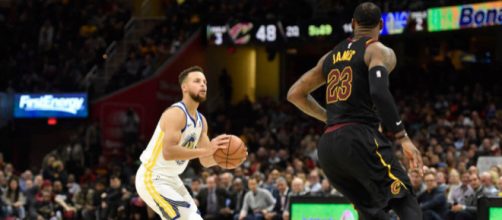The NBA has evolved over the years and is very much a different game than it was in the showtime Lakers days or even just a decade ago. Despite not a whole lot changing in terms of rules and teams in the past 10 seasons, we have seen a huge shift in the way the game is being played and the results coming from this style of basketball.
The advancement of the three-point shot has increased the speed at which the game is being played, this is seen with the increase in quicker possessions, shooting the three-point shot instead of an apparent easier shot close to the basket that has been the focus of teams’ offense for many years.
Teams are now shooting the ball on average, earlier in the shot clock with a lot more three-point attempts league-wide in today’s game in comparison to a season 10 years ago.
Golden State Warriors superstar Stephen Curry can be credited for this change in the game, as his unstoppable shooting range forced teams to completely revamp their defensive and even offensive schemes. We have seen previously tall dominant big men lose their jobs with teams no longer needing their skill sets, and instead looking at signing players who can shoot the ball and make plays.
Three-point takeover
This revolution in the game of basketball is seen with the increased number of three-point attempts by all 30 NBA teams, with the average team averaging 28.98 three-point attempts per game in the 2017-18 season in comparison to 18.04 in the 2007-08 season.
The increase in three point attempts league-wide over the past decade! pic.twitter.com/oTdgMvhvuq
— Mitchell Oakes (@MJONBAFan) April 26, 2018
More possessions
The increase in three-point attempts and makes per game in the modern-day NBA has resulted in faster possessions with three-point attempts happening earlier in the shot clock than a shot close to the basket, and this has led to more overall possessions for all 30 teams each game, and more predominantly the teams that play a faster game. Teams including the New Orleans Pelicans, Los Angeles Lakers and Phoenix Suns have turned up the speed of their offense to a whole new level, and average over 10 more possessions per game than the average team just a decade ago.
The increase in possessions league-wide over the past decade! pic.twitter.com/yjXZaO4qnd
— Mitchell Oakes (@MJONBAFan) April 26, 2018
With more possessions on average per game for each team, huge performances for individuals and teams are now becoming more and more prevalent. Teams are scoring more points, dishing more assists, grabbing more rebounds along with individual players doing the same also.
In turn, these star players accumulate more and more staggering performances while breaking records, and in terms of legacy and looking back at their careers, they may be doing themselves too much justice. In the grand scheme of things, players and teams are gathering statistics at a much higher output than they were in the past, and because of that, they are breaking more and more records.
This is seen with Russell Westbrook, who has averaged a triple-double over the past two seasons, something that had not been done since the 1961-62 season, over 50 years ago. The prevalence of the ‘triple double’ performance is at an all-time high with many players, especially LeBron James, Russell Westbrook, Ben Simmons and James Harden reaching the milestone on a nightly basis.
With the increased speed of the game, we have seen the highest mark of triple-doubles reached last season in 2016-17, and the second highest this season in 2017-18, a clear catalyst of the increased speed of play in the National Basketball Association.
The insane increase in league-wide triple double production over the past decade! pic.twitter.com/903qeU7gCX
— Mitchell Oakes (@MJONBAFan) April 26, 2018
Can these performances change legacies?
But with the climb in the statistical production of players in today’s game, is it unfair to compare their output to those superstars of the 70’s or the 80’s or the 90’s or even the 2000’s, as they played a very different brand of basketball in those era’?
One of the first things people on Twitter, Facebook or Instagram post after a big performance from an all-star is a comparison of them to past players who have also had big performances. When looking back at modern-day superstars including Russell Westbrook, James Harden and LeBron James in a few decades, we will see many huge statistical performances and statlines that will blow us away. But it just seems slightly unfair to compare their statistics to players who played in different era’s, decades before them, as the game was different back then and putting up points, rebounds and assists was probably not as easy.
With the increased possessions in today’s NBA, players have the luxury of having big performances.
Obviously, it takes skill and hard work to put the ball in the basket, to grab rebounds, to accumulate assists, but there is no doubt that the sped-up pace of basketball in today’s NBA is a huge factor and it should be significantly considered when you see an ESPN graphic comparing players of different generations.
If you watch an NBA game today, you will notice it is played at a fast tempo, and according to the statistics, the fastest at which it has been played since the league was created on June 6, 1946. Therefore, we see larger scores than we did in the past. You could make the judgment that players are better nowadays, or more players can shoot nowadays or maybe players are worse defensively now.
But the real reason for the increased statistical output is to do with the faster game, and ultimately the more possessions taking place because of the modern-day fascination with the three-point shot.


